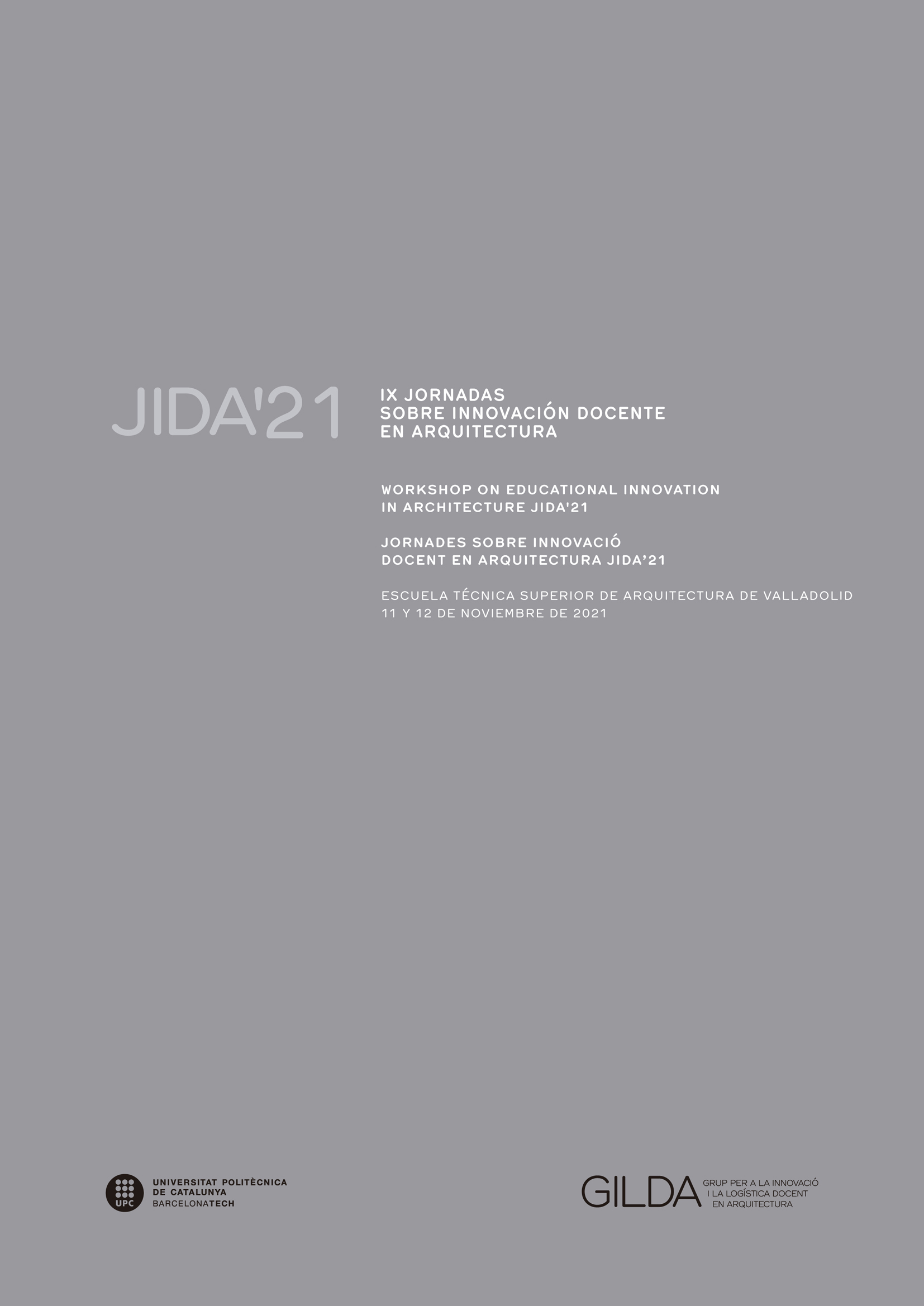Craft-based methods for robotic fabrication: a shift in Architectural Education
DOI:
https://doi.org/10.5821/jida.2021.10600Keywords:
active methodology, design/build, manufacturing-driven design, material exploration, robotic fabricationAbstract
This article discusses robotic fabrication as a tool, beyond an innovative mode of production, to reinterpret the traditional methodology of craftsmanship, such as painting or stereotomy, offering new design potentials applied in architecture. A theoretical framework is developed, comprising an approach to the role of craft; the contemporary paradigm between making and digital tools; and the context of robotic fabrication in Architecture schools. This paper analyzes the methodology and content of a series of educational and research projects (2019-2021) in which robotic fabrication has been implemented through craftsmanship methodology. Finally, these are presented as case studies, illustrating the proposed framework, and help determine its applicability, impact and limitations in a border sense, to establish a more profound dialogue between digital and material design, and demonstrate a new exploratory way of tackling Design in Architecture education.
References
BOZA, L.E. (2006). (Un) Intended Discoveries Crafting the Design Process. Synthetic Landscapes [Proceedings of the 25th Annual Conference of the Association for Computer-Aided Design in Architecture] pp. 150-157.
BRELL-COKCAN, S. and BRAUMANN, J. (2013). Industrial robots for design education: robots as open interfaces beyond fabrication. International Conference on Computer-Aided Architectural Design Futures, Ed. Springer.
BRETT, R.; THOMSON, D.; and DAINTY, A. (2019). Coping with stone: a short-term ethnography of skilled work in UK housebuilding (School of Architecture, Building and Civil Engineering, Loughborough University, Epinal Way, Loughborough, Leicestershire LE11 3TU, UK)
CARPO, M. (2017). The second digital turn: design beyond intelligence. Cambridge, MA: The MIT Press.
CHENG, C. and HOU, J. (2019). Robotic Glass Crafting by Dip Forming. Intelligent & Informed - Proceedings of the 24th CAADRIA Conference, pp. 193-202.
CHINCHILLA, I. (2020). La ciudad de los cuidados, Madrid. Colección Arquitecturas, La catarata (Asociacion los libros de la catarata)
DENIZ, B. and AÇALYA, A. (2017). Simulating Craftwork in Contemporary Architecture, The Journal of Modern Craft, 10:1, 37-57, DOI: 10.1080/17496772.2017.1294324.
FRIEDMAN, J.; KIM, H.; and MESA, O. (2014). Woven clay, Harvard Graduate School of Design.
GARCÍA VILLALUENGA, Y. “Se acabó la fiesta" La Arquitectura Española de los últimos 20 años" rtve<https://www.rtve.es/play/videos/archivos-tema/archivos-tema-se-acabo-fiesta/1269406/> [Consulta: 20 de September de 2021]
GRAMAZIO, F. and KOHLER, M. (2008). Digital Materiality in Architecture. Baden: Lars Müller Publishers.
GROPIUS, W. (1919). Program of the Staatliche Bauhaus in Weimar, Germany.
INSTITUTE FOR ADVANCED ARCHITECTURE OF CATALONIA. Bandsawn curved lumber. <http://www.iaacblog.com/projects/bandsawn-curved-lumber-2/> [Consulta: 20 de September 2021]
KALO, A.1, TRACY, K.2 and TAM, M.3 (2020). Robotic sand carving: Machining Techniques Derived from a Traditional Balinese Craft. 1 -the American University of Sharjah, 2-Singapore University of Technology and Design, 3-ETH Zurich.
LEACH, N.; TURNBULL, D.; and WILLIAMS, C. (2004). Digital tectonics. Chichester: Wiley-Academy.
LOPEZ-PEREZ, D. (2021). R. Buckminster Fuller - Pattern-Thinking. Integral Lars Müller. Zurich, Switzerland
MAXWELL, I. and PIGRAM, D. (2021). In the Cause of Architecture: Traversing Design And Making. Log, Anyone Corporation, Nº25, pp. 31-40.
LATOUR, B. (1983). "Give Me a Laboratory and I will Raise the World", K. Knorr-Cetina y M. Mulkay (eds.), Science. Londres: Sage, pp. 141-170.
LATOUR, B. (1993). We have never been modern, Harvard, Cambridge. Harvard University Press.
MCCULLOUGH, M. (1996). Abstracting Craft: The practiced Digital Hand. Cambridge Massachusetts. London, England. The MIT Press.
NANDERA, S.S. (2014-15). The ever-changing role of craft in architecture. University of Sheffield School of Architecture. Thesis supervised by Carolyn Butterworth. <https://issuu.com/sirdeep/docs/the_ever_changing_role_of_craft_in_> [Consulta: 20 de September 2021]
MCGEE, W.; FERINGA, J.; and SØNDERGAARD, A. (2012). Processes for an Architecture of Volume, Rob | Arch.
PICON, A. (2013). Ornament: The Politics of Architecture and Subjectivity (Chichester: John Wiley & Sons Ltd., 2013), p. 75.
PYE, D. (1968). The nature and art of workmanship. London: Cambridge, at the University Press.
RISATTI, H. (2007). A theory of craft: function and aesthetic expression. Chapel Hill: University of North Carolina Press.
SENNETT, R. (2008). The Craftsman. New Haven: Yale University Press.
VELIZ REYES, A.; WASSIM, J.; GOMAA, M.; CHATZIVASILEIADI, A.; AHMAD, L.; and WARDHANA, N. (2019). Negotiated matter: a robotic exploration of craft-driven innovation, Architectural Science Review, DOI:10.1080/00038628.2019.1651688.
WRIGHT, F.Ll.; DEVANE, A.; and GUTHEIM, F.A. (1975). In the Cause of Architecture, Frank Lloyd Wright: essays. New York, NY: Architectural Record.
ZORAN, A. and BUECHLEY, L. (2013). Hybrid Reassemblage: An Exploration of Craft, Digital Fabrication and Artifact Uniqueness. Leonardo (2013) 46 (1): 4-10. <https://doi.org/10.1162/LEON_a_00477> [Consulta: 20 de September 2021]



















